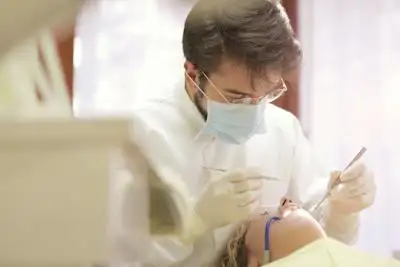Preparation is Key:
Before stepping foot in the dentist's office, there are a few things you can do to ensure a smooth visit:
Schedule wisely: If you experience dental anxiety, consider scheduling an appointment early in the morning when you're feeling fresh and rested.
Gather your information: Bring your insurance card, a list of any medications you're taking, and any questions you have for your dentist.
Be honest: Inform your dentist if you have any allergies, medical conditions, or concerns about your oral health.
Practice good oral hygiene: Brush and floss your teeth thoroughly before your appointment. This will make the cleaning process easier for the hygienist.
Welcome to the Dentist's Office:
Upon arrival, you'll be greeted by the friendly staff who will handle the administrative formalities. Then, it's on to the exciting part:
1.The Consultation:
Meet the hygienist: This friendly professional will likely be your first point of contact. They'll ask you about your oral health history, any concerns you have, and discuss your usual brushing and flossing routine.
Medical history check: Your blood pressure may be taken, especially if you have certain medical conditions or are taking medications that affect it.
2.The Examination:
Get comfy: Settle into the dental chair, which might feel a bit intimidating at first. But remember, the hygienist is there to ensure your comfort throughout the process.
Mirror, mirror on the wall: The hygienist will use a small mirror to examine your teeth and gums, checking for any cavities, plaque buildup, or signs of gum disease.
X-ray vision (optional): Depending on your dental history or if the dentist suspects hidden issues, you might need X-rays to get a closer look at the structure of your teeth and jaw.
3.The Cleaning:
Plaque attack: This is where the familiar whirring sound comes in! The hygienist will use a scaler to remove plaque and tartar buildup from your teeth, focusing on areas that are harder to reach with brushing and flossing.
Flossing finesse: You might also get a professional flossing demonstration, using special tools to clean between your teeth and under the gum line.
Polishing perfection: To finish it off, the hygienist will use a gentle polishing tool and fluoride paste to buff your teeth, leaving them smooth and shiny.
4.Dentist Time:
Once your teeth are sparkling clean, it's the dentist's turn to take a look. They'll perform a thorough examination similar to the hygienist's, checking for any cavities, bite problems, or other oral health concerns.
5.The Discussion:
Findings and feedback: The dentist will discuss their findings with you, explaining any issues they noticed and recommending any necessary treatment. Don't hesitate to ask questions or clarify anything you're unsure about.
Treatment plan: If any treatments are needed, the dentist will discuss the options with you, explaining the procedures, costs, and potential risks and benefits. You can then make an informed decision about how to proceed.
Prevention tips: Finally, the dentist will provide you with personalized tips on how to maintain good oral hygiene and prevent future dental problems.
Bonus Round:
Fluoride treatment: Depending on your individual needs, the dentist might recommend a fluoride treatment to strengthen your teeth and prevent cavities. This is especially beneficial for children and people who are at high risk of cavities.
Sealants for superheroes: For children and adults with deep grooves in their teeth, dental sealants can be applied to act as a protective barrier against plaque and bacteria.
Remember:
A routine dental check-up is nothing to be afraid of. It's a proactive step towards maintaining good oral health and preventing future problems. With proper preparation and understanding of the process, you can approach your next appointment with confidence and leave with a healthy, happy smile.
Beyond the Basics:
If you have any specific concerns or questions about your oral health, be sure to discuss them with your dentist. Here are some additional topics you might want to bring up:
Cosmetic dentistry: If you're unhappy with the appearance of your teeth, the dentist can discuss

